Text
Brazil Santos

As the largest coffee producer in the world, Brazil has an incredible range of coffees, producing conditions and lots to choose from, making it possible to have consistent, high-quality blends year after year. Brazil Santos is well known for its sweet and smooth profile, widespread appeal, medium body, and creamy, mellow flavor. Because it provides such a consistent profile, this coffee is an excellent base for any blend that will keep your customers returning time and time again for the same beloved flavors.
Most Brazilian coffee is grown on huge farms, built and equipped for mechanical harvesting and processing designed to maximize productivity. The relatively flat landscape across many of Brazil’s coffee regions, combined with high minimum wages, has led most farms to opt for this type of mechanical harvesting over selective hand-picking.
In the past, this mechanization meant that strip-picking was the norm. However, today’s mechanical harvesters are increasingly sensitive, meaning farms can selectively harvest only fully ripe cherries at each pass. This is excellent news for specialty-oriented producers.
In many cases and on less-level sections of farms, a mixed form of ‘manual mechanized’ harvesting may be used. The derricadeira – a mechanized rake that uses vibration to harvest ripe cherry - can selectively pick ripe cherry more quickly and cost-effectively than individual hand pickers. A tarp is spanned between coffee trees to capture the cherry as it falls.
With the aid of these newer, more selective technologies, a growing number of farms are increasingly concerned with – and able to deliver - cup quality.
After harvest, cherries are typically laid to dry in thin layers on patios. Under direct sunlight, they are carefully monitored and turned frequently.
0 notes
Text
Guatemala Huehuetenango
Huehuetenango is well-known for its high altitude and consistent weather patterns. The region lies at a nexus of hot air sweeping eastwards from the Plains of Tehuantepec in Oaxaca, Mexico, and cool air rushing down the Cuchumantanes Mountains. Meeting this hot and cold air creates a microclimate that keeps frost in check and enables coffee cultivation at higher altitudes. Coffee production at 2,000 meters above sea level here is typical. These conditions are perfect for producing the region's sparkling acidity and distinctive fruit flavors.
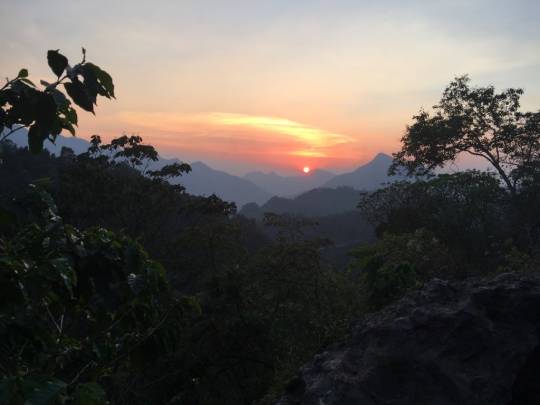
Due to its remoteness in one of Guatemala's three non-volcanic regions, most producers in Huehuetenango process their own coffee.
Farmers selectively hand-pick cherry and pulp it on their farms, using small hand-powered or electric drum pulpers. Parchment is then fermented in buckets or bags.
Following fermentation, parchment is agitated to remove the remaining mucilage and washed in clean water. All water used during pulping and washing is filtered—usually through earthen holes—so that the organic solids do not contaminate local waterways.
Farmers typically lay parchment to dry on raised beds stacked on each other to maximize space. Patios are also frequently used.
0 notes
Text
Brewing Community: The Vital Role of Coffee Shops in Neighborhood Building
In the hustle and bustle of modern life, where digital interactions often dominate, the significance of physical spaces for fostering community bonds cannot be overstated. Amidst this landscape, coffee shops are more than places to grab a caffeine fix; they serve as vibrant hubs where neighborhoods come alive with conversation, connection, and camaraderie. From freshly ground beans' welcoming aroma to soft chatter's comforting ambiance, coffee shops play a pivotal role in nurturing local communities.
A Gathering Place
Coffee shops are more than just venues to savor a cup of joe; they are gathering spots where individuals from diverse backgrounds converge. Whether it's students engrossed in their textbooks, professionals tapping away on laptops, or retirees catching up with old friends, coffee shops provide a neutral ground for people to come together. In an era where social isolation is becoming increasingly prevalent, these establishments offer a sense of belonging and camaraderie.
Cultural Exchange
One of the remarkable features of coffee shops is their ability to facilitate cultural exchange. As melting pots of ideas and perspectives, these spaces unite individuals from various walks of life, fostering an environment ripe for artistic dialogue and understanding. Whether through art displays, live performances, or simply striking up conversations with fellow patrons, coffee shops serve as platforms for celebrating diversity and broadening horizons.
Supporting Local Economies
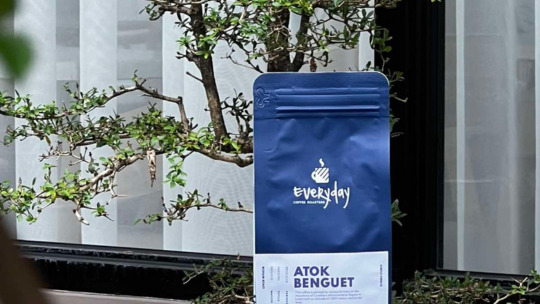
Beyond their social significance, coffee shops are crucial in supporting local economies. By sourcing beans from nearby roasters, employing local baristas, and often showcasing local artists or musicians, these establishments contribute to the economic vitality of their neighborhoods. Moreover, they serve as magnets for foot traffic, attracting visitors who may also patronize neighboring businesses, creating a ripple effect that stimulates the local economy.
Catalysts for Creativity
Creativity often thrives in the ambiance of a coffee shop. The gentle hum of conversation and the aroma of freshly brewed coffee create an atmosphere conducive to inspiration. Many writers, artists, and entrepreneurs find solace and stimulation within the walls of their neighborhood coffee shop, using it as a sanctuary to brainstorm ideas, collaborate with peers, or immerse themselves in their craft.
Building Social Capital
In community development, social capital—the networks of relationships among people who live and work in a particular society—plays a crucial role. Coffee shops are instrumental in fostering social capital by providing a space where individuals can forge meaningful connections and strengthen community ties. From impromptu meetups to organized events, these establishments serve as catalysts for building trust, reciprocity, and cooperation among residents.
Preserving Neighborhood Identity
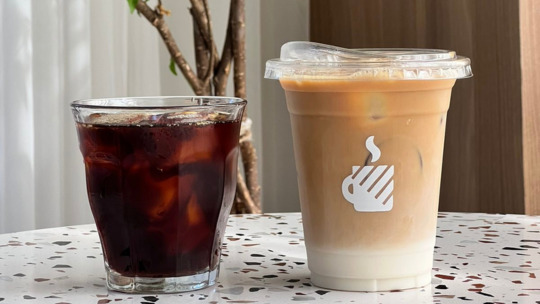
In an increasingly homogenized world, where chain stores and franchises dominate the urban landscape, locally-owned coffee shops offer a sense of authenticity and character deeply rooted in the neighborhood's identity. They serve as cultural landmarks, preserving their communities' unique flavors and stories. By patronizing these establishments, residents not only support local businesses but also contribute to keeping their neighborhood's distinctive charm.
Conclusion
In the tapestry of urban life, coffee shops emerge as vibrant threads that weave together the community fabric. Beyond their role as caffeine purveyors, these establishments serve as catalysts for social interaction, cultural exchange, and economic vitality. They provide a sanctuary where individuals can escape the rigors of daily life, connect with their neighbors, and contribute to the flourishing of their local communities. As we navigate an increasingly interconnected yet often isolated world, the importance of coffee shops in neighborhood buildings cannot be overstated—they are more than just places to sip coffee; they are the heartbeats of community life.
0 notes
Text
Panama Finca La Santa
Finca La Santa is a hidden gem Jose Manuel and Aileene Gallardo owned. The farm and its owners combine quality, passion, and dedication that translates into a fantastic coffee.
Finca La Santa is situated between 1100 and 1400 MASL in Jurutungo, Santa Clara, in the province of Chiriqui, nestled between a natural rainforest reserve on the one side and the border of Costa Rica on the other. The location and environment of the farm are challenging, with cold temperatures at night, lots of wind, and high rainfall. Even so, Jose manages to produce some incredible coffees. Or, as Jose says, it’s because of these conditions that while production and productivity are low, the result is a coffee with intense flavor. The cold wind and rain from the Atlantic through the mountains dividing Panama create La Santa’s special flavor notes.
The farm is based on a family tradition, which started when Jose’s father came to the region in the 60’s and started to plant coffee about 10 years ago. Jose and Aileene have divided the farm management into 5 micro-areas, all located in different microclimates. They process all the coffee on the farm, with the final preparation done in a more enormous mill.
The secret of the success of their coffee is a result of several factors all playing together in the right way. At the top of this list is Jose’s own dedication and his near obsession with growing and processing exceptional specialty coffee. He speaks passionately about the farm and coffee and is passionate about processing specialty coffee. He strongly believes in learning and improving techniques continuously in this area. Jose takes meticulous care of the plants and ensures only ripe cherries are picked during harvest. He constantly cups during the processing and separates lots by day and location to determine the micro lots that produce the best quality. Other essential factors in coffee are the selection of the seeds, the particular area of the coffee, and the microclimates.
0 notes
Text
5 Types of Coffee Drinkers You'll Encounter This Valentine's Day

As Valentine's Day approaches, cafes buzz with the sound of espresso machines, and the aroma of freshly brewed coffee fills the air. Amidst the romantic ambiance, you'll likely encounter a diverse range of coffee drinkers with unique preferences and personalities. Here are five types of coffee drinkers you might meet this Valentine's Day:
The Classic Romantic:
This coffee drinker prefers the timeless elegance of a classic espresso or a velvety cappuccino. They appreciate the artistry of coffee-making and savor every sip as they reminisce about past Valentine's Day celebrations. You'll often find them lingering over their coffee, lost in thought, or engaged in intimate conversation with their loved ones.
The Adventurous Explorer:
For the adventurous explorer, Valentine's Day is an opportunity to try something new and exciting. They're drawn to exotic blends and unconventional brewing methods like pour-over or cold brew. Their coffee order might include rare single-origin beans or bold espresso-based concoctions with unexpected flavor combinations. With each cup, they embark on a journey of discovery and delight.
The Indulgent Sweet Tooth:
Valentine's Day is synonymous with indulgence; the sweet tooth coffee drinker fully embraces this sentiment. They crave decadent treats like mochas, caramel macchiatos, and flavored lattes topped with whipped cream and drizzled with syrup. For them, coffee is more than just a beverage—it's a dessert experience to be savored and enjoyed to the fullest.
The Health Conscious Connoisseur:
While some may indulge in sugary coffee drinks, the health-conscious connoisseur takes a more mindful approach to their caffeine fix. They opt for alternatives like almond milk lattes, matcha green tea, or turmeric-infused coffee, prioritizing wellness without sacrificing taste. Their coffee order reflects their commitment to nourishing their body and soul, even on Valentine's Day.
The Solo Romantic:
Not everyone celebrates Valentine's Day with a significant other, and the solo romantic embraces the opportunity to treat themselves to a unique coffee experience. Whether a perfectly brewed pour-over or a luxurious flat white, they relish the solitude and serenity of enjoying their favorite beverage alone. For them, coffee is a companion that never disappoints, offering comfort and contentment with every sip.
This Valentine's Day, whether you're sharing a romantic moment with a loved one or enjoying your own company, take a moment to appreciate the diverse world of coffee and its unique individuals. From the classic romantics to the health-conscious connoisseurs, there's a coffee drinker for every palate and preference. So raise a cup of love, friendship, and the simple pleasure of a great cup of coffee.
0 notes
Text
Why Single-Origin Coffee is so Expensive?
The coffee industry has recently witnessed a surge in popularity and appreciation for single-origin coffee. Enthusiasts often flock to cafes and specialty stores, willing to pay a premium for a coffee sourced from a specific region or even a single estate. But why exactly does single-origin coffee come with a hefty price tag? Let's delve into the factors contributing to this sought-after brew's expense.

Limited Availability: Single-origin coffee is sourced from a specific geographic region, farm, or estate, which inherently limits its availability. Unlike blends, where beans from various locations are combined to achieve a consistent flavor profile, single-origin coffee represents the unique characteristics of a particular area's terroir. This exclusivity drives up the cost, requiring careful sourcing and often involving smaller-scale production.
Quality and Traceability: Single-origin coffee is prized for its distinct flavors, influenced by altitude, soil composition, and climate. To maintain quality and traceability, producers must adhere to meticulous farming practices, including selective harvesting and processing methods tailored to each batch of beans. This attention to detail ensures that the coffee maintains its unique flavor profile. Still, it also adds to the overall cost of production.
Direct Trade and Fair Compensation: Many producers of single-origin coffee prioritize direct trade relationships with farmers, bypassing traditional supply chains and ensuring fair compensation for their labor. While this ethical approach benefits farmers and promotes sustainability, it often increases consumer prices. Direct trade relationships involve greater transparency and investment in the livelihoods of coffee-growing communities. Still, they also necessitate higher prices to support these initiatives.
Quality Control and Roasting Expertise: Roasting plays a crucial role in unlocking the full potential of single-origin coffee beans. Roasters must carefully monitor variables such as temperature, duration, and airflow to highlight the unique characteristics of each batch. Achieving consistency and perfection requires expertise and precision, driving up the cost of production. Additionally, single-origin beans are often roasted in smaller batches to preserve their individuality, further adding to the expense.
Market Demand and Branding: The growing demand for specialty coffee and the allure of exotic origins and unique flavor profiles contribute to the premium pricing of single-origin coffee. As consumers become more discerning and educated about coffee, they are willing to pay higher prices for a superior product with a compelling story behind it. Furthermore, coffee roasters and retailers' branding and marketing strategies add perceived value to single-origin offerings, further justifying the elevated prices.
In conclusion, the allure of single-origin coffee lies in its exclusivity, quality, and distinct flavor profile, but these qualities come at a cost. Limited availability, quality control, ethical sourcing practices, and market demand all contribute to the higher price tag of single-origin coffee. Despite its expense, many coffee enthusiasts are willing to pay the premium for a truly exceptional and ethically sourced cup of coffee that reflects the unique characteristics of its origin.
0 notes
Text
Exploring Unique Coffee Bean Varieties: A Guide to Specialty Coffee Origins
In coffee connoisseurship, the journey from farm to cup is an intricate dance of flavors, aromas, and craftsmanship. Specialty coffee, with its diverse array of unique bean varieties, invites coffee enthusiasts on a sensory adventure. In this guide, we embark on a virtual tour of a specialty coffee roastery to delve into the fascinating world of coffee origins, exploring the roasting process, quality control measures, and the remarkable journey of coffee beans from the farm to the roastery to the eager hands of the consumer.
The Art of Sourcing: From Farms to Roastery
The first chapter in our exploration takes us to the coffee farms in the high altitudes of renowned coffee-growing regions. Specialty coffee is often sourced from single-origin farms, each with its own distinctive terroir, a term borrowed from the world of wine to describe the unique environmental factors that shape the flavor profile of the beans.
Imagine the sun-kissed slopes of Colombian coffee farms, where Arabica beans thrive in the perfect blend of altitude, climate, and soil. Picture the lush landscapes of Ethiopian coffee regions, where centuries-old heirloom varieties contribute to the rich tapestry of flavors. These are just glimpses of the diverse origins that contribute to the world of specialty coffee.
The meticulous selection of beans is a crucial step in the process, with roasters partnering directly with farmers to ensure ethical and sustainable practices. This promotes environmental responsibility and guarantees the highest quality beans for the roasting journey ahead.
The Roasting Symphony: Crafting Flavors in Every Bean
As we step into the heart of the roastery, the air is filled with the enticing aroma of freshly roasted coffee. The roasting process is an art carefully orchestrated to enhance the inherent flavors of each bean variety. Roasters employ a delicate balance of time and temperature to coax out the unique characteristics locked within the green coffee beans.
Specialty coffee roasters often use small-batch roasting methods, allowing for precise control. This approach ensures that each batch receives the attention it deserves, with the roaster acting as a maestro, coaxing symphonies of caramel, fruit, or floral notes from the beans.
The commitment to craftsmanship extends to the blending of different bean varieties. Roasters skillfully combine beans with complementary flavors to create unique blends, elevating the coffee-drinking experience to new heights. Like a well-composed piece of music, these blends harmonize individual notes to create a flavor profile that transcends the sum of its parts.
Quality Control Measures: A Commitment to Excellence
Quality control is the unsung hero of the specialty coffee world. From the moment the beans arrive at the roastery, they undergo rigorous inspections. This meticulous scrutiny ensures that only the finest beans make it to the roaster, guaranteeing a consistently exceptional cup of coffee.
Roasters consider factors such as bean size, moisture content, and defects. Additionally, cupping sessions—tastings akin to those found in wine—are conducted to evaluate flavor profiles and identify any potential imperfections. This commitment to quality extends beyond the roastery, as reputable roasters often maintain relationships with cafes and consumers, seeking feedback to refine and perfect their offerings continuously.
The Culmination: From Roastery to Your Mug
Our journey concludes with a moment of delight: the sip. The culmination of the intricate process, from the farm to the roastery, is the satisfaction experienced by the consumer. Whether you're savoring the nuanced notes of a Kenyan AA or the chocolatey richness of a Brazilian Bourbon, specialty coffee offers a spectrum of flavors that transcends the ordinary.
In the world of specialty coffee, each cup tells a story—one of dedication, craftsmanship, and a journey that spans continents. As consumers, we become not just coffee drinkers but participants in an art form that celebrates the unique diversity of coffee bean varieties. So, the next time you take a sip of that carefully brewed specialty coffee, remember that you're not just tasting a beverage; you're experiencing the culmination of a journey that begins on a distant farm and concludes in the comforting warmth of your favorite mug. Cheers to the artisans who turn humble coffee beans into an extraordinary sensory adventure.
0 notes
Text
Ethiopia Yirgacheffe Misty Valley
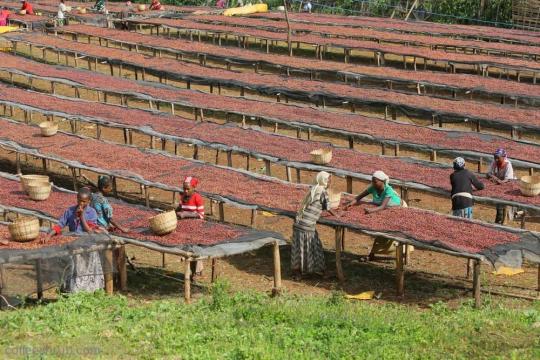
The washed coffees of Yirgacheffe have long been prized for their delicate, tea-like aromatics and clean citrus flavor. Recently, producers in the Gedio region have been reinventing the natural process originally developed in Ethiopia to offer a different profile from this well-known origin. The Misty Valley is a prime example of the fruitiness, complexity, and character of these Natural Yirgacheffe coffees.
When the ripe cherries are brought to the mill to dry on raised African beds, they are constantly turned (day and night!) for the first 48 hours of drying to ensure an even evaporation of the moisture from the cherry. This lends consistency and cleanliness to the cup, which can prove difficult in a process prone to mold and uneven air circulation. After the coffee is thoroughly dried and the skin, mucilage, and parchment removed, it is sorted and traded through the Ethiopian Coffee Exchange as a Grade 1 Yirgacheffe.
In the cup, the Misty Valley truly delivers. A perfumed floral aroma leads into a crisp and complex fruit basket flavor. The milky body provides the backbone for the fruit and aromatics, creating a harmonious balance. The cup finishes with a lingering, pleasant mouthfeel.
0 notes
Text
Rising Demand for Premium and Specialty Coffee at Home
In recent years, the landscape of coffee consumption has undergone a significant transformation. The once ubiquitous drip coffee and instant coffee culture have given way to a burgeoning market for premium and specialty coffee experiences, especially within the comfort of one's home. As consumers become more discerning about their coffee choices, a wave of enthusiasts is investing in high-quality beans, sophisticated brewing equipment, and a deeper understanding of the intricate world of coffee. This article explores the factors driving the rise of premium and specialty coffee at home and how this shift reshapes how we perceive and enjoy our daily cup of joe.

Shift in Consumer Preferences
The demand for premium and specialty coffee at home is partly a reflection of evolving consumer preferences. Modern coffee enthusiasts are unsatisfied with a caffeine fix; they seek a sensory experience beyond the conventional. This shift can be attributed to a growing appreciation for coffee beans' nuanced flavors, aromas, and origins. Consumers are more willing to explore diverse coffee profiles, including single-origin beans, artisanal roasts, and unique processing methods.
The Trend of Home Brewing
One of the driving forces behind the rise of premium and specialty coffee at home is the increasing popularity of home brewing. As people spend more time honing their culinary skills and seeking unique gastronomic experiences, coffee has become a natural extension of this trend. Home brewers are investing in high-quality coffee beans sourced from renowned regions worldwide, experimenting with various brewing methods, and embracing the artistry of crafting the perfect cup.

Technology's Role in Elevating the Home Coffee Experience
Advancements in coffee brewing technology have played a pivotal role in elevating the home coffee experience. From precision grinders to state-of-the-art espresso machines, technology has made it easier for enthusiasts to replicate the precision and quality achieved by professional baristas. Smart coffee makers and connected devices enhance the brewing process, allowing users to control parameters such as water temperature, extraction time, and coffee-to-water ratios precisely.
Emergence of Specialty Coffee Subscription Services
Another key driver of the home-coffee revolution is the proliferation of specialty coffee subscription services. These services directly deliver freshly roasted, high-quality beans to consumers' doorsteps, providing a convenient and curated coffee experience. By subscribing to these services, consumers access a rotating selection of beans, often sourced from different regions, each with its unique flavor profile. This model not only caters to the demand for convenience but also encourages consumers to explore a variety of coffee offerings.
The Rise of Coffee Education
An informed consumer is a powerful force, and the growing interest in premium and specialty coffee at home has spurred a parallel rise in coffee education. Enthusiasts are delving into the intricacies of coffee cultivation, processing, roasting, and brewing. Online platforms, workshops, and coffee events have become valuable resources for individuals eager to enhance their understanding of the beverage. As consumers become more knowledgeable, they develop a heightened appreciation for the craftsmanship of producing exceptional coffee.
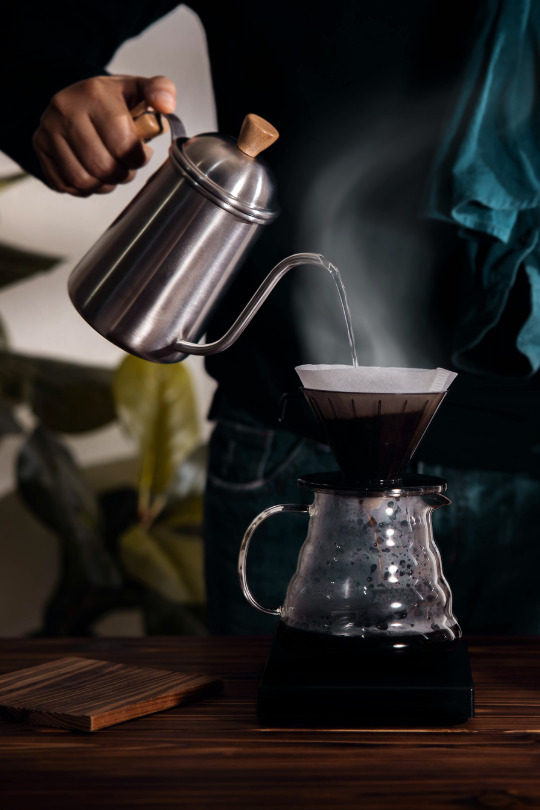
The Impact of Social Media
Social media platforms have amplified the visual and social aspects of coffee culture. Instagram, in particular, has become a haven for coffee enthusiasts to showcase their brewing setups, share aesthetically pleasing images of coffee creations, and connect with a global community of like-minded individuals. The visually driven nature of social media has fueled the desire for aesthetically pleasing, premium coffee experiences at home. It has created a virtual space where enthusiasts can exchange brewing tips, discover new beans, and celebrate the art of coffee.
The Ethical and Sustainable Coffee Movement
The shift towards premium and specialty coffee at home is about flavor and aesthetics and ethical and sustainable consumption. Consumers are increasingly conscious of their coffee choices' environmental and social impact. Specialty coffee often emphasizes fair trade practices, environmentally friendly cultivation methods, and support for local farmers. As consumers align their values with their purchasing decisions, the demand for ethically sourced and sustainably produced coffee continues to grow.
What's Next?
While the rise of premium and specialty coffee at home presents exciting opportunities for consumers and the coffee industry, it also poses specific challenges. Affordability remains a concern, as high-quality beans and sophisticated brewing equipment can be relatively expensive. Additionally, the learning curve associated with mastering various brewing techniques can be steep for newcomers to the specialty coffee scene.
However, these challenges are also avenues for growth and innovation. As the market expands, manufacturers are responding by developing more affordable yet high-quality coffee products. The democratization of specialty coffee is underway, focusing on making premium coffee experiences accessible to a broader audience.

Will it Continue?
The growing premium and specialty coffee market at home reflects a cultural shift in how we perceive and enjoy our daily caffeine fix. It's not just about a quick energy boost anymore; it's about the experience, the craftsmanship, and the community surrounding the world of coffee. As consumers invest in better beans, advanced brewing equipment, and knowledge, the home has become a haven for coffee enthusiasts seeking the perfect cup.
The trajectory of this trend is poised to shape the future of the coffee industry, influencing how coffee is produced, marketed, and consumed. As the demand for premium and specialty coffee at home continues to rise, the industry will likely see increased innovation, accessibility, and sustainability, ensuring that the coffee culture becomes a diverse and inclusive space for all. So, whether you're a seasoned home barista or just starting your journey into the world of specialty coffee, the possibilities for discovery and enjoyment are boundless. Cheers to the ever-evolving art and science of brewing excellence at home!
Everyday Coffee Roasters is an e-commerce providing fresh-roasted coffee delivered right to your doorstep, conveniently and safely wherever you are in the Philippines. Discover the world's best coffee.
0 notes
Text
Located just south of Ethiopia, Kenya is well known for producing excellent cups of coffee primarily due to the excellent research and development of coffee and the country's highly educated farmers.
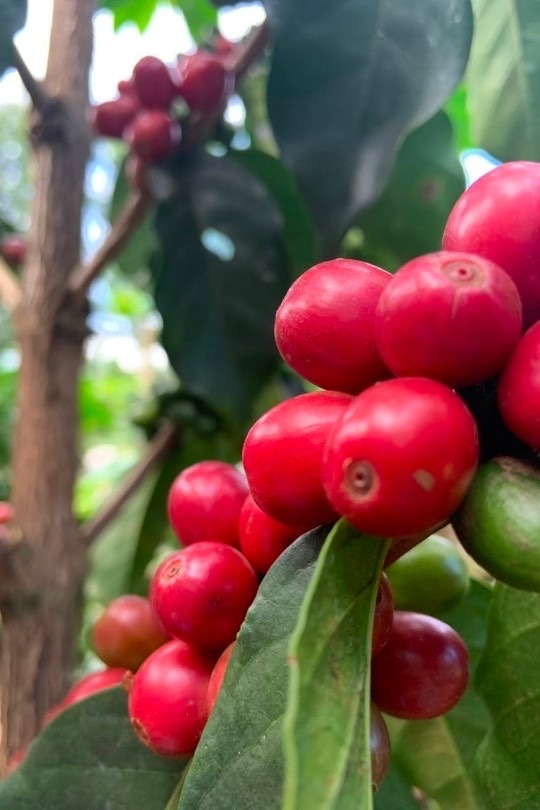
In Kenya, regardless of whether the lot is traceable, a grading system is being used for all its exported coffee based on the bean size, and some of you may have yet to come across terms such as AA, AB, and PB when looking at a bag of Kenyan coffee.
This coffee comes from the Central Region of Kenya, with rich volcanic soil in which it is grown and a high altitude of 1,700 - 2,000 meters above sea level, allowing the coffee to develop bold and complex flavors.
In this washed lot, you will get a floral aroma, with notes of berries and chocolate in the cup, with a nice body and an after-taste that lingers.
0 notes
Text
Uganda Mountain Harvest
Mountain Harvest's coffee has become one of the most popular Ugandas in a very short time. The coffee is rich in chocolate-covered raisin sweetness, full-bodied, and has just enough stone fruit flavor and earthy florals to make it an outstanding please-everyone profile.
Mountain Harvest is a very progressive producer group in Uganda, investing heavily in their farmers' equity in the final product and constantly diversifying their cup profiles available to buyers.

Mount Elgon and Mountain Harvest
Mount Elgon is a massive peak split nearly in two by the border of Uganda and Kenya. The "mountain" itself, now an extinct shield volcano, is an enormous expanse of successive plateaus floating dramatically above the surrounding valley floor. It is also home to a dense patchwork of farming communities growing some of the best organic coffee in Africa.
Mountain Harvest is a young and big-thinking group established in 2017 committed to long-term economic and environmental sustainability for smallholders on Mt. Elgon. These farmers are Uganda's highest and most diversified coffee growers with incredible quality potential thanks to the climate, soil fertility, and a longstanding culture of land stewardship.
To raise the economic standard in remote coffee-growing Elgon communities, Mountain Harvest began as an impact investing project underwritten by Lutheran World Relief (LWR). It has expanded in just a few years to include farmer education and training, central processing infrastructure, regional storage facilities, detailed quality control, and international marketing. As of this year, Mountain Harvest works with 850 individual smallholders across eight communities on Mt. Elgon, with each farm growing between 600-1,000 coffee trees. Their coffee stands up to the best thoroughly washed Uganda Arabicas we typically taste all year.

The Supply Chain
Mountain Harvest organizes growers by the local community. They administer farm management and processing training to calibrate all producers to high specialty standards, and they expedite parchment to their centralized location in Mbale, at the foot of Mt. Elgon. In Mbale, each delivery is cupped against a strict and detailed qualitative and physical grading system and allocated accordingly. A typical smallholder picks coffee daily during harvest, de-pulps it on hand-cranked or generator-powered de-pulpers, sometimes shared between neighboring households, and ferments overnight in small plastic tubs or nylon sacks. Coffee is then rinsed clean and dried in a thin layer on ground tarps or, increasingly, raised screens to improve air circulation.
Individual parchment deliveries are built into blended containers, single-community lots, and single-delivery micro-lots for sale throughout harvest. Mountain Harvest's pricing to their producers is a minimum of 10-30% above local market prices and often involves additional premiums for quality. Unlike other regional buyers who exclusively process centrally or buy low-grade, humid, smallholder parchment, Mountain Harvest invests in farmers' capacity to produce high-specialty, fully-dried parchment coffee within their resources, helping them maximize their margin when they sell.
0 notes
Text
Takele Mammo Denbi Konga

This coffee from Takele Mammo Denbi, at 47 years old, is a brand-new participant in the Single Farmer Lots Program this year but has yet to be familiar with the direct export process. Takele is currently stepping down after many years as the Managing Director of the Yirgacheffe Coffee Farmers Cooperative Union, of which his farm has been a member. Takele has worked closely with the program, helping it to succeed, but avoiding conflict of interest excluded his coffee from the program. Takele cultivated this single farmer lot on his 8-hectare farm in the Konga district, located in the heart of the coveted Gedeo Zone—the narrow plateau section dense with savvy farmers whose coffee is known as “Yirgacheffe.”
The Konga cooperative is well-known for its quality, and it’s a distinct pleasure having individual farmers from this perennially impressive community to celebrate, not to mention one as dedicated to farmer opportunity as Takele.
The Single Farmer Lots Program
The Single Farmer Lots Program initiative is to remove single farmer lots from the more giant cooperative blends sold through the ECX, taking custody of these precious coffees through a direct sale. The program is a unique micro-channel of almost unprecedented specificity in coffee supply from Ethiopia. Farmers with the drive and means to sell directly are supported, and, in turn, buyers of Ethiopian coffee have access to a portfolio of single-farm lots, un-diluted by the typical cooperative- and exporter-level consolidations.
Annual farm visits and regular communication with farmers through representatives in Ethiopia have ensured that farmers and washing stations follow strict farm management and post-harvest protocols. The results have been increasing cup quality and higher returns for the individual producers that have come to count on excellent coffee year after year.
0 notes
Text
Muhlisin Agropuro
Situated along the slopes of the Argopuro Volcano is a region in East Java known for its coffee production thanks to the rich volcanic soil and high elevations. The iconic volcano creates the beautiful Javanese landscape in the Situbondo Regency. When coffee was first cultivated in Indonesia, it was common for Dutch colonists to plant low-quality Robusta in large estates. However, the 21st century ignited a shift towards Arabica, especially in East Java, whereby more micro-lots appeared, owned by producers experimenting with new, innovative processing methods.

This lot is one such example of this coffee-quality revolution in Indonesia. Producer and cooperative leader Pak Muhlisin founded the Pokmas Walida Cooperative in 2014 to gather producers in the area and spread awareness about new processing methods to improve quality.
During the harvest, each producer will carefully handpick the cherries and transport them to the collection station adjacent to the Pokmas Walida wet mill. Here, the cherries are submerged in water to remove any floaters to maintain quality. Once sorted, the coffee is placed into large water tanks and covered for 72 hours to initiate fermentation and breaks down the exterior mucilage helping to create a unique-tasting profile. When fermentation is complete, the cherries are evenly dispersed on covered raised beds to dry for 15 days and moved to tarped patios to dry for another ten days. Then, cherries are moved regularly to prevent mold growth. The coffee is ready for hulling once it reaches the ideal water content level. The dried cherries are moved via truck to the dry mill, 50 miles away, to be hulled and set to rest before export.
0 notes
Text
Panama Chiriqui Santa Clara
Panama is an origin that constantly makes headlines in the specialty coffee world, primarily associated with the renowned Gesha variety. But several complexities influence specialty coffee, and it would be a mistake to reduce the complexity of this famous growing region to nothing more than plant variety.
With this lot of Caturra and Catuai from Finca Santa Teresa, there is an opportunity to explore the impact of terroir and different processing techniques on other varieties. Santa Teresa has 240 acres cultivated with coffee, meticulously divided into 20 plots with distinct landscapes and micro-climates, which influence a coffee seed's maturation and ultimate quality in different ways.
In addition to a mindful and environmentally balanced approach to farm management, Santa Teresa has an experienced team and onsite infrastructure at the farm to ensure attention to detail during the harvest. This Caturra and Catuai lot is honey processed where ripe cherries are floated to remove less dense and damaged seeds, then de-pulped, placed on raised beds, and regularly turned over 8 to 12 days.
0 notes
Text
How to stay hydrated in the summer heat
As the temperatures soar this summer, many people turn to cold drinks like iced tea, lemonade, and iced coffee to stay hydrated. However, did you know drinking hot coffee can also help you stay hydrated in the summer? Here are some tips on how to stay hydrated this summer with coffee.
Drink coffee in moderation.
While coffee can help you stay hydrated, drinking it in moderation is essential. Too much caffeine can lead to dehydration and other health issues. If you're drinking coffee, be sure also to drink plenty of water to stay properly hydrated. According to the National Academy of Medicine, adults should aim to drink between 8-12 cups of water per day, depending on their body weight, activity level, and climate.
Choose the correct type of coffee.
Choosing the right type is essential if you're trying to stay hydrated with coffee. Avoid sugary coffee drinks like frappuccinos and sweetened lattes, as they can dehydrate you. Instead, opt for black coffee, which is low in calories and won't dehydrate you.
Brew coffee with cold water.
Brewing coffee with cold water is one way to make it more hydrating. Mix coarsely ground coffee with cold water and let it steep for 12-24 hours in the fridge. Then strain the mixture and enjoy. Cold-brewed coffee is less acidic than hot-brewed coffee, which makes it easier on your stomach and can help you stay hydrated.
Add ice cubes.
If you prefer hot coffee, add ice cubes to your cup to stay hydrated. It can help cool down the coffee and make it more refreshing. You can also add flavor to your coffee by using flavored ice cubes, such as fruit juice or mint leaves.
Try iced coffee.
Iced coffee is a great way to stay hydrated in the summer months. Brew your coffee as usual, let it cool down, and pour it over ice. Add milk or cream to your iced coffee for a richer flavor.
In conclusion, while it may seem counterintuitive, coffee can help you stay hydrated during the hot summer. Just be sure to drink it in moderation, choose the right type, and drink plenty of water alongside it. Happy hydrating!
0 notes
Text
Bolivia Irupana Fausto Machaca
Coffee has been in Bolivia for hundreds of years, but now a new generation of coffee farmers dedicated to producing high-quality coffee is taking the stage in Bolivia. For the first time in the country’s history, green coffee production has funding and support from the federal government, fueling the search for knowledge among dedicated young coffee professionals. The epicenter in the rise of Bolivian specialty coffee is in the Los Yungas region. Most farms came after a wave of migration to the area caused by Bolivia’s Agrarian Revolution in the 1950s.
And nearly a century later, this lot emerged from a single small farm belonging to Fausto Machaca and his family, a 4-acre farm near Caranaví in the Irupana municipality. Fausto and his family have been growing coffee in the Yungas region of Bolivia for over 50 years. Fausto carefully harvests the cherry, de-pulps, ferments, washes, and dries the coffee on patios and raised beds.
Since Bolivia is a landlocked coffee-producing country, farmers need help getting their coffee to the international market. Felix Chambi Garcia, through his leadership role at the San Juan cooperative, has become an important figure, helping producers with the logistics of moving coffee to the dry mill, where quality and traceability inspection during the preparation for export.

0 notes
Text
How to Order and Shop Everyday Coffee Roasters with GLife
GLife is one of the newest GCash services. It is a feature that puts Everyday Coffee Roasters within the GCash dashboard, shopping from different single-origin coffees, seasonal blends, brewing equipment, and freshly-baked croissants, all within the GCash app.

How to Order Coffee and Shop Everyday Coffee Roasters with GLife
1. Select GLife from our GCash dashboard
Open GCash and tap the GLife icon. If you can't find it, tap the "Show More" option to see all the GCash features. Make sure that you have the latest app version.
2. Search Everyday Coffee Roasters from the list of trusted merchants
Now that you've accessed GLife, type "Everyday Coffee" and start shopping for our latest offerings of single-origins, blends, AeroPress, and more...
3. Pay using GCash conveniently
Upon checkout, Select GCash as your payment option, Enter your GCash mobile number, and Input the OTP and MPIN to complete your payment.
And you're done! You will receive an SMS message confirming your order. It's time to visit our store for pick-up!
0 notes